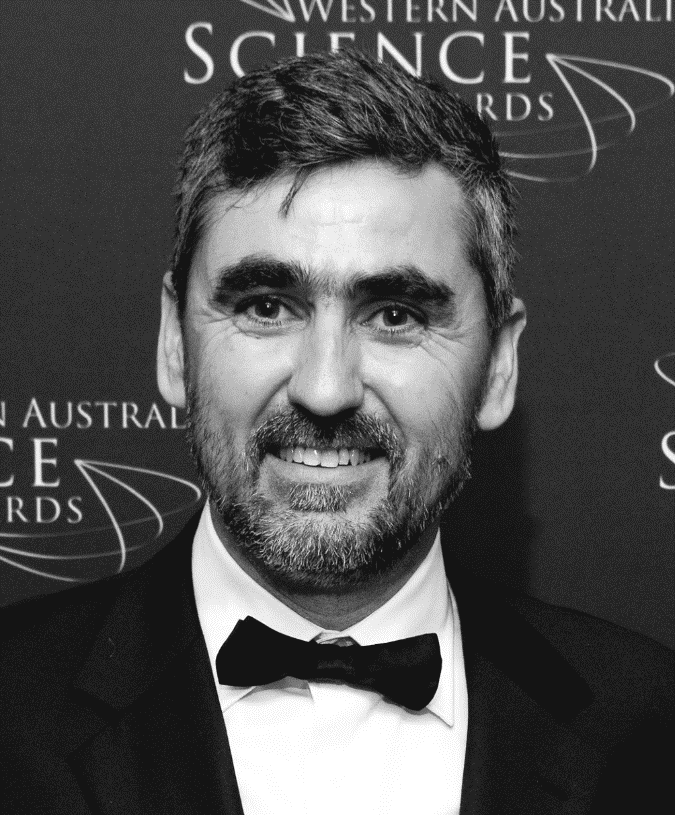围绕全球人工智能发展趋势,西澳大学Ajmal Mian教授(IAPR Fellow)将讲授3场学术报告,探讨机器视觉、图像处理等领域的人工智能技术发展,以及应用于解决工业应用、环境保护和临床医疗等领域的实际问题。
报告题目1:3D Point cloud and mesh analysis
报告人:Ajmal Mian
主持人:陈俊颖
报告时间:2023年11月24日下午3:30-4:30
报告地点:腾讯会议:273-919-877(会议密码:2023)
报告摘要:3D point clouds are an important data for vision tasks such as autonomous driving and robotics. In this talk, I will introduce our spherical convolution kernel that systematically quantizes point neighborhoods to identify local geometry and avert dynamic kernel generation during training. I will then discuss the fuzzy variant of the kernel that is robust to varying point density, a typical problem in 3D sensors. The kernels are tested with different graph convolutional networks and achieve promising results. I will also introduce our Picasso library designed for deep learning over complex 3D meshes. Picasso contains CUDA implementations of our spherical kernels and mesh specific convolution kernels (vertex2facet, facet2vertex, facet2facet) along with various network architecture design tools. Picasso also contains the first CUDA-based on-the-fly mesh simplification algorithm for deep learning. Finally, I will discuss our LiDAR data sets annotated for semantic segmentation and self-localization. We have designed multiple transformer architectures and self-supervised learning schemes for the aforementioned tasks. Our works are published in CVPR, PAMI, TNNLS, ICRA and IROS.
报告题目2:Vulnerabilities and backdoors in Artificial Intelligence models
报告人:Ajmal Mian
主持人:陈俊颖
报告时间:2023年12月8日下午3:30-4:30
报告地点:腾讯会议:922-903-351(会议密码:2023)
报告摘要:AI models are vulnerable to adversarial attacks in the form of subtle perturbations to inputs that make the model perform incorrect decisions. In this talk, I will give a brief introduction to popular methods for generating adversarial perturbations and some defence mechanisms. I will then discuss our Universal Targeted Attack (LUTA) that makes a deep model predict a specific target label for any sample of only a given source class with high probability. I will then discuss our pioneer work on fooling human action recognition models, which also transfers to the physical world. Next, I will introduce our framework for generating adversarial textures for 3D models for application in the physical world. Our method uses multiview neural rendering along with an ensemble of robust/non-robust models to ensure transferability of the adversarial textures. Finally, I will present our work on injecting backdoors in three popular text-to-image generative models (Stable Diffusion, DALLE, Imagen) at three stages of the generative process by modifying the behaviour of the embedded tokenizer, the language model or the image generator. Our embedded backdoors increase the bias towards the target outputs by more than five times the usual, without compromising the model robustness or the generated content utility. Our methods are published in CVPR 2018, CVPR 2020, PAMI 2021 and TNNLS 2022.
报告题目3:Dense 3D face correspondence for medical applications
报告人:Ajmal Mian
主持人:陈俊颖
报告时间:2023年12月13日下午3:30-4:30
报告地点:腾讯会议:324-244-587(会议密码:2023)
报告摘要:In this talk, I will present our research on dense 3D face correspondence which is a core problem in facial analysis for many applications such as biometric identification, symptomatology for the diagnosis of Autism and Obstructive Sleep Apnoea and planning for facial reconstructive surgery. From a morphometric point of view, we are interested in performing dense correspondence based purely on shape without using texture. This makes the problem challenging but the correspondences and subsequent analyses more precise. The idea is to start from a sparse set of automatically detected corresponding landmarks and propagate along the geodesics connecting nearby points. By anchoring on the most reliable correspondences, accurate dense correspondences are iteratively propagated between hundreds of faces without using a prior model. Thus, our dense correspondences are not biased by a prior model allowing us to construct population specific deformable face models for symptomatology and patient specific morphs to facial norms for reconstructive surgery. Moreover, by establishing dense correspondences between different facial identities and expressions, we synthesize millions of 3D faces with varying identities, expressions and poses to learn a deep model for large scale 3D face recognition. Our model achieves state-of-the-art results, outperforming existing methods in open and closed-world face recognition, on a dataset four times the largest dataset reported in prior literature. Finally, I will show results of our 3D facial analysis to medial applications in the diagnosis of sleep apnoea and autism, as well as reconstructive craniofacial surgery planning and outcome analysis.
主讲人简介:
Ajmal Mian is a Professor of Computer Science at The University of Western Australia. He is the recipient of three esteemed national level fellowships from the Australian Research Council (ARC) including the recent Future Fellowship award 2022. Prof Ajmal is a Fellow of the International Association for Pattern Recognition, Distinguished Speaker of the Association for Computing Machinery and President of the Australian Pattern Recognition Society. He received the West Australian Early Career Scientist of the Year Award 2012, the HBF Mid-Career Scientist of the Year Award 2022 and several other awards including the Excellence in Research Supervision Award, EH Thompson Award, ASPIRE Professional Development Award, Vice-chancellors Mid-career Research Award, Outstanding Young Investigator Award, and the Australasian Distinguished Doctoral Dissertation Award. Ajmal Mian has secured research funding from the Australian Research Council, the National Health and Medical Research Council of Australia, US Department of Defence DARPA, and the Australian Department of Defence. He is a Senior Editor for IEEE Transactions on Neural Networks & Learning Systems and an Associate Editor for the Pattern Recognition journal. He was a General Chair of the International Conference on Digital Image Computing Techniques & Applications (DICTA 2019) and the Asian Conference on Computer Vision (ACCV 2018). He also served as an Area Chair of ECCV 2022, CVPR 2022, ACM Multimedia 2020, WACV 2019, WACV 2018, ICPR 2016 and ACCV 2014. He has supervised 26 PhD students to completion, mentored 12 Postdoctoral Fellows and has published over 280 scientific papers.


